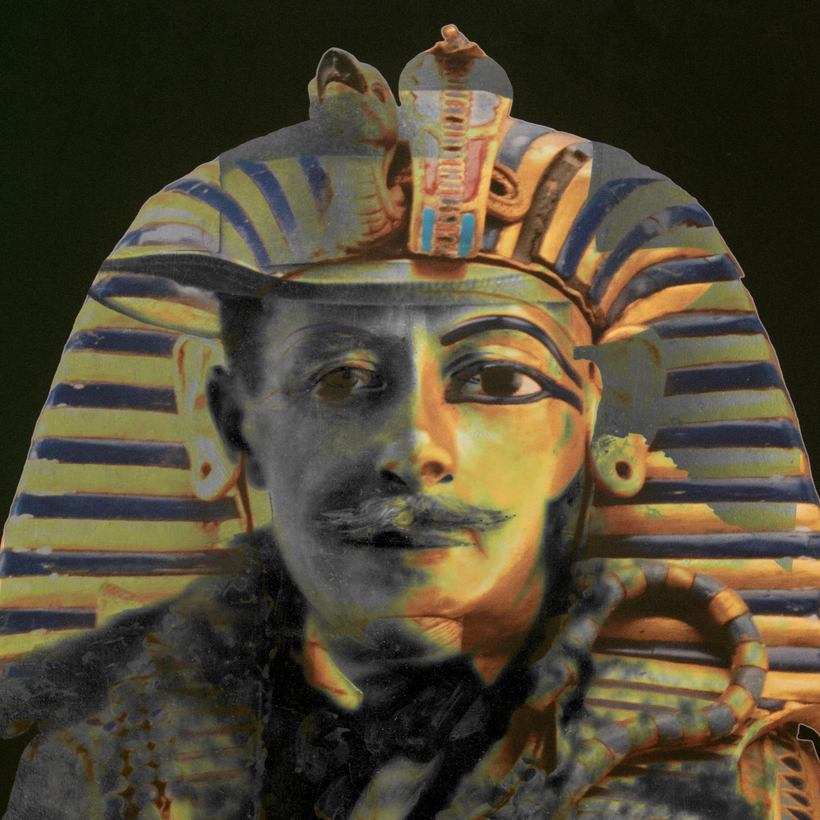The Earl and the Pharaoh: From the Real Downton Abbey to the Discovery of Tutankhamun may seem like an unwieldy title, but not for the Countess of Carnarvon. She has made a cottage industry of her castle home, Highclere, the filming location for Downton Abbey. Her published oeuvre includes At Home at Highclere: Entertaining at the Real Downton Abbey; Christmas at Highclere: Recipes and Traditions from the Real Downton Abbey; Lady Almina: the Lost Legacy of the Real Downton Abbey; and Lady Catherine and the Real Downton Abbey. Now we find that a mere 3,000 years separates King Tut and the real Downton Abbey.
There is a great deal more of the earl than of the pharaoh in this book. Indeed, Tutankhamun doesn’t appear until the last few chapters. But we know he’s waiting patiently, as we must, too, through this exhaustive account of the fifth Earl of Carnarvon’s boyhood (happy), school days (painful), health (terrible), travels, cars, racehorses, and, at last, his passion for Egyptology.
Luckily for us, the earl, born in 1866, was a likable lord, relishing traditions and embracing innovations. He married the natural daughter of Alfred de Rothschild. Before the wedding, Mr. Alfred, as he was fondly known, settled £500,000 (more than $85 million today) on his daughter and paid off Carnarvon’s debts of some £150,000.

The newly flush Carnarvons followed the aristocratic calendar of the day, when the fashionable escape from English winter was Egypt. Cairo and Luxor had beautiful hotels where Europe’s elites could entertain themselves in an exotic landscape of desert, bazaars, temples, tombs, and feluccas on the Nile. The warm, dry air was a tonic for the earl, who suffered from respiratory ailments.
Lord Carnarvon went to Egypt for the climate and found his life’s work. Captivated by the ancient civilization emerging from excavations before his eyes, he applied for a permit to start his own dig. He hired hundreds of men and boys, laborers who affectionately called him “Lordy.” He also hired Howard Carter, an experienced excavator.
After years of fruitless digging at various sites, with a pause for World War I, the pair agreed that 1922 would be their final season. They dug at a site where layers of old huts had made the work of excavation—and the depredation of tomb robbers—difficult. On November 24, the discovery of a step leading downward ignited hope, flaming into excitement when the exposed stairway ended at a sealed entrance. They opened a hole just big enough for a handheld candle. Carter peered in and, after minutes of silence, answered Carnarvon’s “Can you see anything?” with his famous reply, “Yes. Wonderful things.”
News of the discovery of King Tutankhamun’s fabulously rich tomb flew around the world. Tut fever spread like the Spanish flu. Crowds flooded in to see the treasures, even as objects were being removed for documentation and preservation. Carnarvon negotiated for the newspaper, book, and film rights to the story that eclipsed all other news. The Queen of Belgium invited herself to officially open the tomb in February 1923.
A few weeks later, still in Cairo, Carnarvon nicked himself shaving. The tiny wound became septic and soon he was desperately ill. On April 4, 1923, the Earl of Carnarvon died.

After 10 more years of work, the excavation was complete, its artifacts housed in the Cairo Museum. The “wonderful things” have since traveled the world, led by the pharaoh’s iconic gold death mask, which has given a name and face to an entire civilization. The earl died before the tomb’s most famous artifact was found.
After helping to bring a forgotten boy pharaoh into the light, Lord Carnarvon dwindled away in public memory. Here, the Countess of Carnarvon tries to put that right, to return the forgotten earl to the story. He certainly deserves to be there.
However, she burdens us with such a heavy load of endless, even pointless detail about his life that it threatens to smother the spark of his personality. Because we already know about the big payoff at the story’s end, it’s a long slog to get there. I like the earl. I would like him even better if I knew him a bit less well.

Robin Olson is a writer and painter. She lives in Vermont
